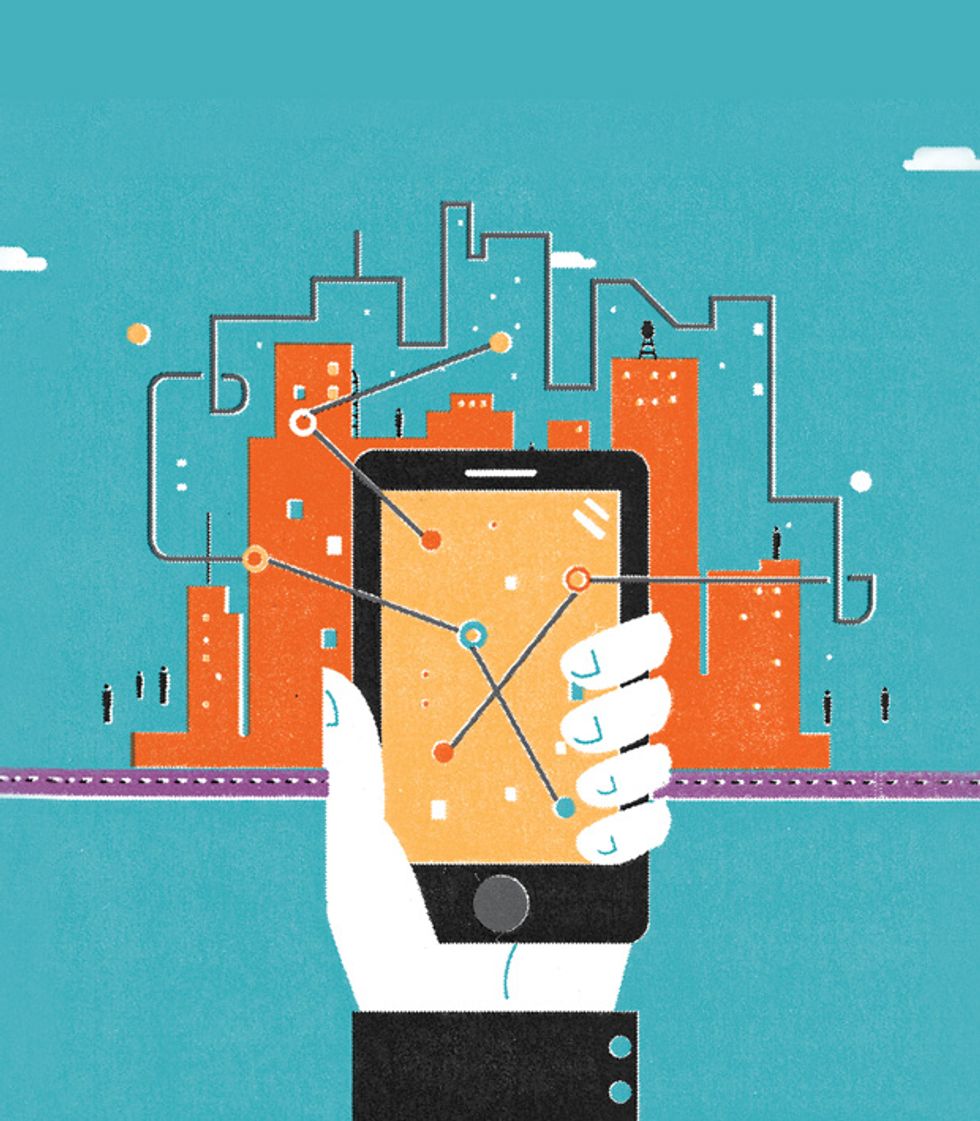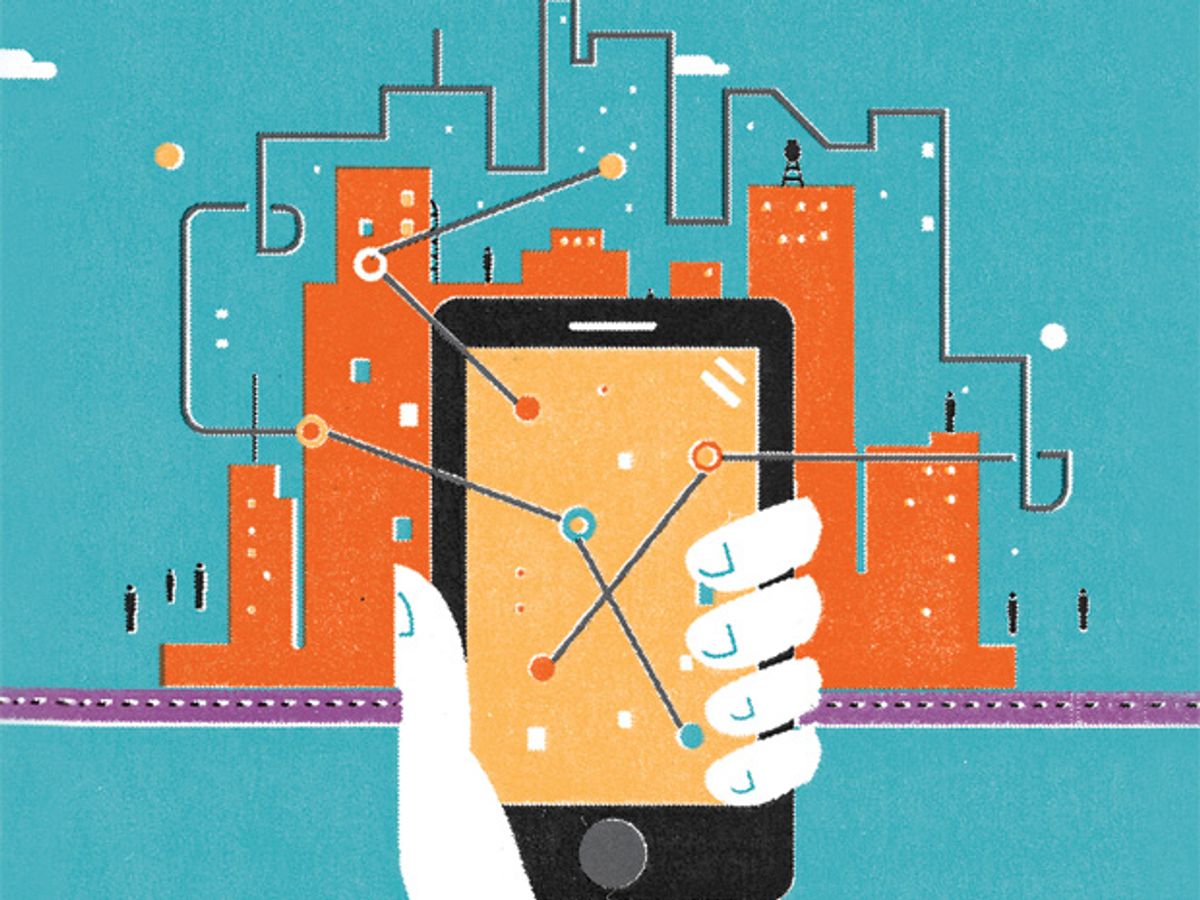We want our tools to sing of not just productivity but of our love of curiosity, the joy of wonderment, and the freshness of the unknown.
—Eric Paulos, “Manifesto of Open Disruption and Participation”

In his essay “Walking in the City,” the French scholar Michel de Certeau talks about the “invisible identities of the visible.” He is talking specifically about the memories and personal narratives associated with a location. Until recently, this information was only accessible one-to-one—that is, by talking to people who had knowledge of a place.
But what if that data became one-to-many, or even many-to-many, and easily accessible via some sort of street-level interface that could be accessed manually, or wirelessly using a smartphone? This is essentially the idea behind urban computing, where the city itself becomes a kind of distributed computer. The pedestrian is the moving cursor; neighborhoods, buildings, and street objects become the interface; and the smartphone is used to “click” or “tap” that interface. In the same way that a computer, mouse, and interface are required to operate a Web browser to surf sites, the equivalent components of street computing create a reality browser that enables the city dweller to “surf” urban objects. On a broader level, the collection, storage, and distribution of the data related to a city and its objects is known as urban informatics (described by one technologist as “a city that talks back to you”).
Smartphone in hand, what can the modern-day flaneur expect to find in this newly digitized urban environment? First, thanks to the prevalence of GPS data, wayfinding is giving way (so to speak) to wayshowing, interfaces that provide specific directions from here to there, and to social navigation, getting around with the help of others (avoiding traffic, for example) and then checking in with your friends when you get there. Similarly, our urban gadabout might take advantage of use-someplace technologies such as augmented reality, where physical space is overlaid with virtual data. A good example is Streetmuseum, a Museum of London app that can overlay an archive photo of a street scene onto the same scene as shown through your smartphone’s camera. Beyond augmented reality is amplified reality, where extra data is built into an object from the get-go. For example, the embedding of radio-frequency identification or near-field communication technologies in street objects enables the creation of locative media (also called location-based media). These situated technologies contain data about a specific location, which is then beamed to devices as they come within range, an exchange known as a situated interaction. An example is the sound garden, where designers assign sounds to public places, which users can then listen to using Wi-Fi–enabled devices.
There is, sadly, the ever-present danger that advertisers and hucksters will take advantage of these technologies to turn the city into a giant billboard. But to the technologists and social scientists at the forefront of urban computing, the goal is enhanced civic engagement. To that end, where once the ideal of pervasive computing was to create seamless, unnoticeable technology, today’s urban computing designers want to build seamful interfaces, whose visibility encourages users to interact directly with systems. Curatorial media allow for urban data curation, the careful collection of stories—histories as well as facts and figures—using technologies called urban annotation systems. Since data are both curated and disseminated in such systems, this is known as read/write urbanism.
Is the urban computer a good thing? Well, it’s certainly an inevitable thing, so I wouldn’t waste too much breath complaining about it. Think about a regular PC: You can turn it off, or you can use it for fun or for productivity. The urban computer is no different. You can ignore it (turning a city off is problematic), or you can use it to become a more attentive, engaged, and concerned citizen. It’s a tool. Make it sing.
This article originally appeared in print as “The City as Computer.”
About the Author
Paul McFedries has written IEEE Spectrum’s Technically Speaking column since 2002. McFedries is the author of more than 70 books on software and technology. His website, Word Spy, tracks emerging words and phrases.
Paul McFedries is a technical and language writer with more than 40 books to his credit. He also runs Word Spy, a Web site and mailing list that tracks new words and phrases.



